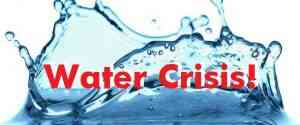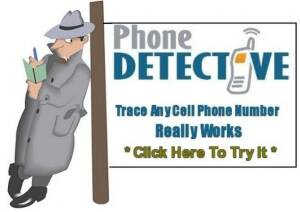by Survivalog
When preparing for any large-scale emergency or disaster scenario our initial tendency is to seek out the most basic necessities for survival: food, water, shelter. Those serious about survival expand these necessities to include protection, first-aid, mobility, etc. I believe one of the most important tools to include in any survival plan is a smart phone capable of offline card storage.
In my profession, I am attached to my smart phone. I depend upon it to work as much as my Leatherman while backpacking. I also know that during a large-scale emergency or a TEOTWAWKI scenario, a cell phone for the purpose of calling might be completely ineffective. Cell towers, satellites, and the Internet require huge amounts of manpower and infrastructure to maintain. However, if these go down your phone can still be used as a wealth of knowledge that can literally save your life.
The items I recommend are based purely on my own experiences, purchased with my own resources. I have field-tested my gear in several environments, most challenging a six-month stint in Glacier National Park. There are hundreds of different configurations to make this work within scope of your budget and technical knowledge.
Items Required:
1) A smart phone capable of SD or similar card storage. This means a phone in which you can store data offline and access at any point, regardless of cellular coverage. I purchased an HTC EVO about six months ago, but there are several similar phones at any price range. My cell phone carrier limited my options but you do not need a carrier to make this effective.
2) A mobile battery charger and battery pack.
I use the Tekkeon TekCharge Mobile Power and Battery Charger. Tekkeon TekCharge Mobile Power and Battery Charger. It’s inexpensive, easy to use and easy to store. Again, there are several comparable brands out there. I like Tekkeon because it includes an LED charge display.
3) Rechargeable batteries. I’ve had the best performance using Sanyo Eneloop AA Pre-Charged Rechargeable Batteries. These low self-discharge NiMH cells are advertised as holding 85% of the charge with no ‘memory effect’ when recharging. In my experience this is accurate.
4) Solar panel charger, with USB port. Here is where doing your research is most effective.
There are several brands on the market that advertise as capable of powering cell-phones. While solar panels aren’t created equally, you are generally looking for ones that have the most surface area, mobility, and durability. I have tested several models, but a company called Goal Zero has given me the best results. I was able to purchase the Nomad 7M Solar Panel solar panel for less than $80.
All of these items are for the intended purpose of keeping your phone running when the power no longer flows. I find that charging batteries rather than charging a cell-phone directly is more effective and offers more versatility. The Tekkeon TekCharge allows you to charge your phone with AA batteries.
Applications:
The real survival information comes by way of Apps, or applications. Almost all are free on an Android phone, and can be transferred from a PC at home to your phone. This allows you to download Apps without having a cell-phone carrier. There are literally thousands of Apps that could be useful in an emergency situation. These are ones I have personally used:
Apps usually download to your phone’s internal memory by default. Because of this, the first app you should download is called “App 2 SD” or an equivalent. What this does is transfer any downloaded App to your SD card for permanent storage. SD Cards can be interchanged and offer much more space than the phones built in memory. You can load up several SD cards worth of information and put them into your phone when needed, or keep them as backups.
Useful Apps
So what kinds of survival apps are out there? The answer is almost infinite to your situation. I will break them down into what I think are key areas for survival.
The “All-in-One’s”
An Application I draw on time and time again is called “U.S. Army Survival Guide” and it is exactly what it sounds like. This App contains the entire Army survival guide. It includes illustrations and diagrams and is broken up into 23 chapters including a full glossary and appendix. It offers basic to mid-level survival tips, ranging from Shelter construction and trapping, to starting a fire and how to stay hidden. It’s always better to know this information off-hand but as a reference, this is the app you want.
Another infinite possibility app is “Google Books”. This allows you to purchase and store an e-book on almost any subject you can think off. A quick search for survival books netted me hundreds of results. What this offers is the ability to download almost any book that you might already own and to draw on it when needed, or even just to learn more techniques when the time comes. Lugging around half a dozen books can be taxing on both space and energy, especially if survival requires being mobile. Beyond survival purposes this is a great way to keep your mind off any situation you might be in. E-Books are a great way to utilize multiple SD Cards. With the almost infinite library of information at your fingertips, you can store thousands of books and guides.
An e-book might be too much information to quickly draw upon. For this reason I also use an app called “WikiPock” that can download specific Wikipedia entries that can be viewed at a later time. You can be as specific or generic with this information as you want to be. I have several entries ranging from hot wiring a vehicle to greenhouse gardening. As phone storage improves I wouldn’t be surprised if you could soon download the entire English language Wikipedia to your phone. An uncompressed ‘wiki dump’ is about 27 gigs – compressed comes in at about 6 gigs.
Navigation
There are about a dozen or so free and proven off-line map applications. What this offers is the ability to store and view maps from anywhere in the world without data coverage. The basic principal is that with a little common knowledge of navigation you can find your way. I use an app called “MapDroyd”. I was able to download a vector map of the entire United States at any detail – there are maps for almost any country. A physical map is still going to be your most efficient way to find where you are. But, with these Apps you aren’t limited by size and scope.
Keep in mind this isn’t a topography map. There is an app called “BackCountry Navigator” for topography but costs about $10. Also, without GPS or cell-tower connection you won’t be able to automatically pinpoint your location – this is why basic navigating skills are just as important.
Some offline maps offer tools such as address searching or point A to point B directions. Feel free to experiment with different apps to find the right fit.
First-Aid
Like the other apps, this area of survival has a lot of options to choose from. The Army Survival Guide App also has an entire section devoted to first aid and medicinal plants. For my purposes I use an app called “iTriage”. It has a number of tools to choose from, but is most effectively used as a way to diagnose symptoms. A good guide or reference book is still your best bet for getting detailed information and instructions – both of which can be found with Google Books.
Tools & Miscellaneous
KnotsGuide – A knot tying reference App with color photos, step-by-step instructions, and recommended usage for each knot. Can’t live without this.
ElectroDroid – Especially useful for TEOTWAWKI scenarios, this App is a great way to learn how electricity and circuitry works, and how to get it working.
Scanner Radio – This App requires a data connection, but allows you to listen to the dispatch radio of almost any city in the country. Get direct information before hearing about it on the news.
Flashlight – By no means a replacement for a sturdy flashlight, but this App is a good backup or tent light. It utilizes the ‘camera flash’ led on most phones when taking pictures.
Google Translate – Need to speak to someone in a different language, or read the warning label on a foreign-made package? This app allows you to type or speak almost any language and translates it to text or speech, especially useful if traveling.
Camera or Video – Your phone’s basic camera or video function is incredibly versatile. It is a way to remember where you started a trail, or to reference a certain plant or building. The ability to keep photographic record is invaluable.
Games – Surviving is not just about keeping your wits, it’s also about maintaining your spirits and fighting boredom. Games are an easy way to take a break from the situation you might be in. It’s not going to get you out of it physically, but mentally it might make a difference.
The Survival Phone in Use:
Last year I spent six months in Glacier National Park. It’s one of the most beautiful parks in the country and is abundant with natural resources during the summer months. Because I knew I would be there for some time I had downloaded dozens of local trail maps and guides to the SD card.
When I got to the park and needed to recharge my first set of AAs I realized I want to be moving during the daylight, even stopping for a few hours can severely hamper any momentum you might have. Because of this, I rigged up a few ways to best power my survival phone:
The Goal Zero solar panel I purchased comes with some standard tips for getting the most juice out of it. But you don’t always have the time to stay in one place and wait for the sun. The pouch that the panels sit in can be contoured around the top of my backpack. I used a bit of bungee cord to secure it in place. I then ran the USB charging cable through a spare hole in my pack that was originally intended for water bladder tubing. This cable continually charged my AAs with the Tekkeon pack as I moved. When resting I just angled the pack toward the sun for the most direct sunlight. I now had a way to charge AA batteries while on the move.
The phone didn’t always make an appearance while hiking. I usually referred to the physical map folded in my pocket for getting a quick bearing. However, once setup in camp I was able to pour through all of the books and information stored on the SD card and relate it practically to my surroundings. I sought out to find edible berries and plants, comparing them directly to the color photo on my phone. I readjusted which trails I would be taking based on the detail I could see on my phone that I could never get with a physical map. If emergency had struck or I needed to diagnose some symptoms I would be able to. I was also able to read some excellent novels for pure entertainment sake.
A common myth is that any electronic device is useless or too fragile in these types of environments. I kept my phone in a waterproof bag zipped inside of an interior pouch. I own an aftermarket hard shell case, which completely protected the device. I have since picked up a couple Pelican cases that are nearly indestructible for both your phone and SD cards.
I would have been fine without my phone, but I have gone backpacking for many years. If it was a survival scenario that I didn’t have time to prepare for, then my phone would be incredibly valuable.
Conclusion:
Most people keep their phone on or near them at all times, so you don’t have to waste valuable time getting it together. Unless you have the funds, it is unreasonable to keep a backup phone, but backup SD cards, batteries, and solar panels are fairly inexpensive. Keep your batteries and solar charger in your grab bag and you’ll be set if the time comes.
It’s important to note that a survival phone should just be used in conjunction with basic survival tools and supplies. It will never take the place of common knowledge and practice. But, if you are unsure of what you should do or how you should do something – it might end up saving your life. The Apps and products I listed are a drop in the bucket compared to what is out there, and every week technology is improving.

















